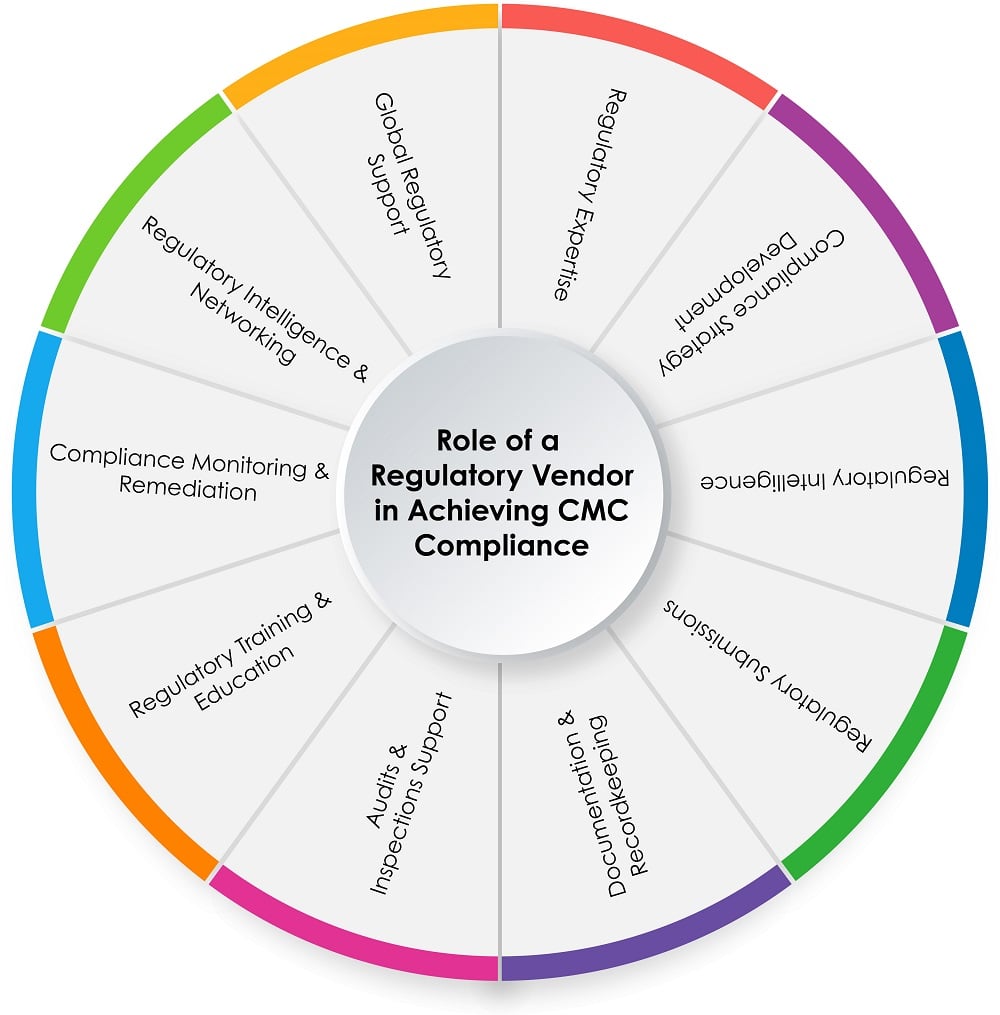
Regulatory Affairs (RA) play a pivotal role in ensuring drug products’ safety, efficacy, and quality in the dynamic pharmaceutical landscape. Chemistry, Manufacturing, and Controls (CMC) RA is essential for compliance. It aims to safeguard patient health and promote public confidence in pharmaceutical products by ensuring consistency and quality throughout the drug manufacturing process.
CMC RA encompasses documentation and compliance requirements related to pharmaceutical products’ manufacturing, quality control, and stability. It involves attention to detail and adherence to Regulatory guidelines throughout the drug development lifecycle. To know more about the importance of CMC RA, consult with our experts.
In this blog, we shall delve into the fundamentals of CMC RA and explore its significance in achieving compliance and maintaining high-quality standards.
The Role of CMC in Drug Development
CMC considerations begin early in the drug development process and continue through all the stages, from pre-clinical research to commercialization. CMC data and documentation are critical components of Regulatory submissions, such as Investigational New Drug (IND) applications, New Drug Applications (NDAs), and Marketing Authorization Applications (MAAs). Regulatory authorities review CMC data to assess the safety, identity, potency, and quality of a drug product, as well as the reliability and consistency of the manufacturing process.
Ensuring Compliance with CMC RA
Compliance with CMC Regulatory requirements is paramount for successful market entry. Regulatory authorities such as the United States Food and Drug Administration (USFDA), European Medicines Agency (EMA), and other regional Health Authorities (HAs) are responsible for establishing guidelines and standards that must be followed. These guidelines cover various aspects, including manufacturing practices, quality systems, analytical methods, stability testing, and validation. Compliance involves meticulous documentation, adherence to Good Manufacturing Practices (GMP), and implementing effective Quality Management Systems (QMS).
Role of CMC Compliance in a Pharmaceutical Company’s Success
Maintaining high standards of CMC compliance offers several advantages to pharmaceutical companies. Some of the key benefits are:
- Mitigating Regulatory risks.
- Supporting successful Regulatory approvals.
- Reducing the likelihood of product recalls.
- Fostering a positive reputation for quality and reliability.
Points to Ponder for Successful RA CMC Function:
- Staying Up to Date with Regulatory Knowledge: Evolving Regulatory requirements from HAs require staying up to date with the latest guidelines. Continuous monitoring of Regulatory updates and incorporating them into CMC practices is crucial to maintain compliance.
- Establishing Quality Systems: This includes developing and maintaining comprehensive Standard Operating Procedures (SOPs), document control procedures, change control processes, and training programs to ensure that employees understand and follow established protocols.
- Risk Assessment and Mitigation: Companies should identify potential risks throughout the drug development and manufacturing processes and implement appropriate risk mitigation strategies. This includes assessing critical process parameters, raw material variability, potential impurities, and supply chain risks, which ensure compliance.
- Documentation and Data Integrity: Maintaining accurate and complete documentation is essential for demonstrating compliance. Companies must establish robust documentation practices, including maintaining batch records, analytical data, stability studies, and validation reports. Ensuring integrity, traceability, and security of data are critical to avoid compliance issues.
- Effective Change Management: Companies must have well-defined change control procedures in place to evaluate and document changes, assess their impact on product quality and Regulatory compliance, and seek necessary approvals before implementing changes.
- Strong Supplier Partnerships and Management: This involves selecting qualified suppliers, conducting audits, and establishing quality agreements that outline responsibilities and expectations. Conducting regular evaluations of suppliers’ compliance with Current GMP (cGMP) requirements is essential.
- Readiness for Audits and Inspections: Companies should conduct self-assessments to identify improvement areas and ensure readiness for Regulatory audits. In fact, addressing audit findings promptly and implementing corrective actions are key to maintaining compliance.
- Continuous Improvement: This can be achieved by encouraging employee engagement, providing training and education on Regulatory requirements, and fostering a quality-oriented mindset across all levels of the organization.
- Addressing Corrective and Preventive Actions (CAPA): By systematically addressing non-compliance using the CAPA methodology, pharmaceutical companies can demonstrate their commitment to continuous improvement and compliance.
- Knowledge of Post-approval Regulatory Changes: Understanding the Regulatory requirements for post-approval changes is essential to ensure compliance. Implementing appropriate change management processes and communicating effectively with HAs can help navigate these changes while ensuring compliance.
Role of a Regulatory Vendor in the CMC Compliance Process
The pie chart below (Figure 1) shows a Regulatory vendor’s role in the CMC compliance process:
Figure 1: Role of a Regulatory Vendor in Achieving CMC Compliance

Conclusion
Achieving and maintaining compliance with CMC requirements demands a strategic approach, which involves cross-functional collaboration, strong quality systems, and ongoing Regulatory Intelligence (RI). It is also essential for successful market access and ongoing product availability. A thorough understanding of the fundamentals of CMC RA and the implementation of effective compliance strategies can help pharmaceutical companies navigate the Regulatory landscape, get approvals, and maintain the highest standards of quality and patient safety. Strategic Regulatory partnerships can synergize these crucial steps by offering best-in-class expertise for staying compliant. Contact us to learn more about our services!









